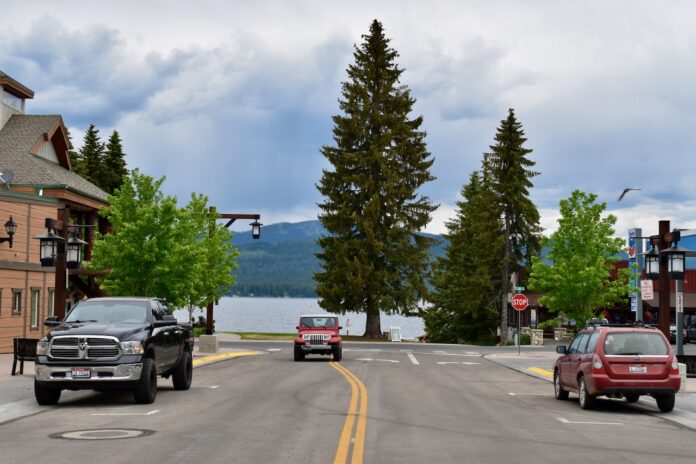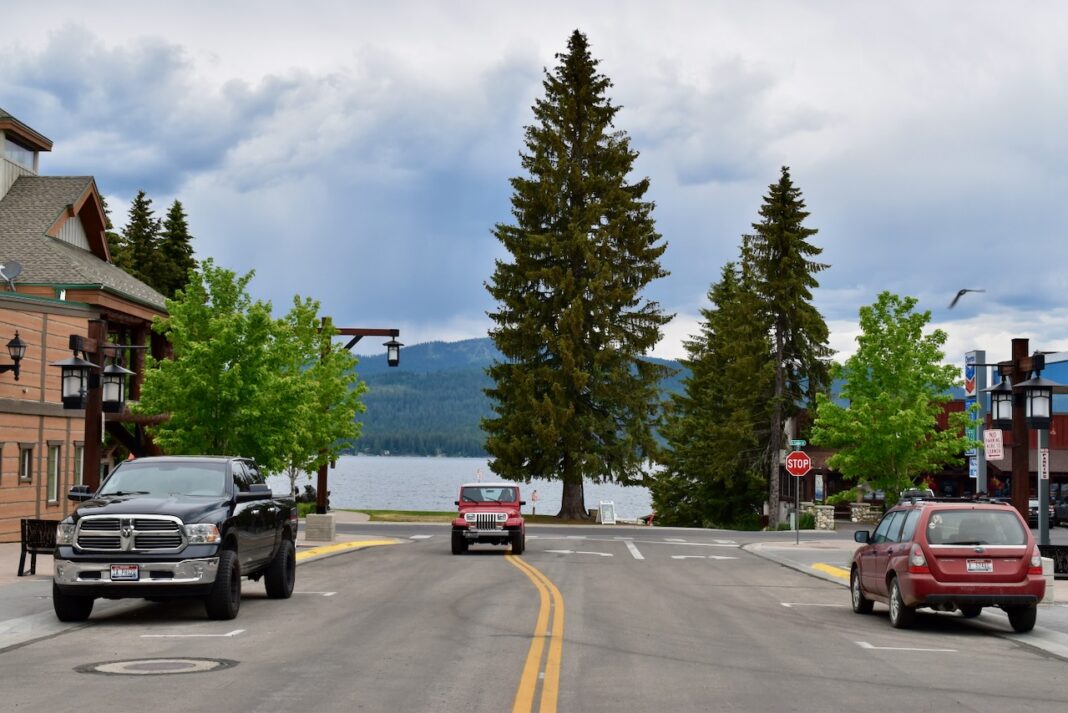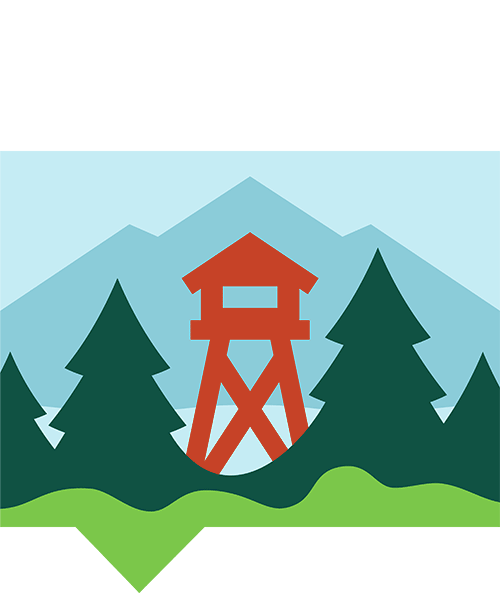An iconic part of downtown McCall’s skyline is at risk of dying, according to the City of McCall.
A large Engelmann spruce tree in Art Roberts Park is showing signs of poor health as the tree’s lower limbs facing West Lake Street (Idaho 55) are becoming thinner.
McCall Parks and Recreation Director Kurt Wolf believes the damage stems from road salts used to melt snow and ice from Idaho 55 and city streets.
“We are concerned for its long-term health and survival,” Wolf told Valley Lookout on Monday.
The Idaho Transportation Department is responsible for snow removal on Idaho 55, including within city limits.
City to ask ITD to curb road salt use
Wolf, who is also the city’s arborist, plans to ask ITD to reduce or stop the use of road salts altogether in downtown McCall to avoid further damage to the tree, known as the “community tree.”
“We are currently looking into what that will look like and hope to reach out to ITD this summer in preparation for next winter,” he said.
The community tree is lit up with colorful lights each year during a celebration hosted by the city before Christmas. Later in the winter, the lights change to white, but continue to light up the McCall night.
The Parks Department is also considering alternative approaches to reducing damage from the road salts. That could include replacing soils around the tree each winter to reduce the build-up of salt or adding salt-tolerant shrubs and plants around the tree to absorb the salt.
De-icing agents used by ITD, commonly known as road salts, travel from the roadway to nearby plants, surfaces, and buildings in mist generated by cars driving on wet roads.
The road salts have been widely blamed for a rash of sickly trees with orange and brown needles along state highways, including Idaho 55 north of Horseshoe Bend.
“What we have learned is that the salty mist that is generated from passing cars on the wet winter roads is blown onto the limbs of conifers as vehicles pass by,” Wolf said. “This, in turn, is burning the needles and de-foliating the conifer (evergreen) trees.”
Without donors like you, this story would not exist.
Make a donation of any size here
The blight of brown and orange needles affecting trees along Idaho 55 is not seen on the community tree in McCall. Wolf suggested that is because it receives less road spray than other trees along the highway where higher speed limits are in place.
“In areas of high traffic at higher speeds it is leading to a quick mortality,” he said. “In areas of slower speeds such as downtown at the Christmas tree it is a slightly lesser impact and is happening at a slower rate.”

Other factors cited for needle blight
ITD officials and regional foresters have previously said road salts may be factor in the needle blight, but suggested the blight is more likely the result of several other factors, like drought, vehicle emissions, tree density, and soils, as BoiseDev reported.
Wolf is confident that road salts are driving the community trees’ deterioration, but admits that it’s “difficult to outright prove.”
“In my professional opinion, there is no doubt that the road salts are the leading cause to all the tree mortality in the ITD corridor,” he said.
Community tree history
The community tree has been decorated each winter since the late 1980s when Tom and Tomi Grote, who formerly owned The Star-News, began stringing it with lights.
“It just looked like a natural for us for a holiday centerpiece,” Tom Grote told Valley Lookout on Monday.
The Grotes paid to bury an overhead power line and install an upgraded electrical box capable of handling the increased load. Then, each Thanksgiving, Idaho Power donated a bucket truck and crew to string the lights onto the tree.
That continued for about 20 years before the effort was taken over by other local businesses and, in 2009, the city.
Grote said the tree now stands about twice as wide and tall as it was in the late 1980s.
“I remember toward the end of our participation, the bucket trucks had trouble reaching the top and we would run out of garland due to the increased width,” he said.
It is unknown when the tree was planted or if it just naturally grew in Art Roberts Park, which was established in the 1960s and named after former McCall mayor Art Roberts.






